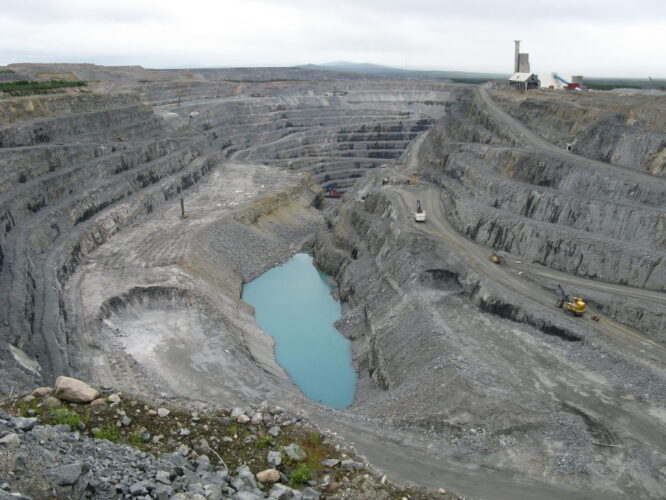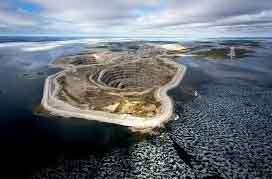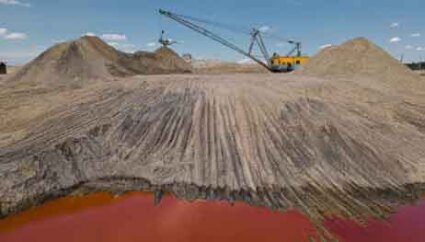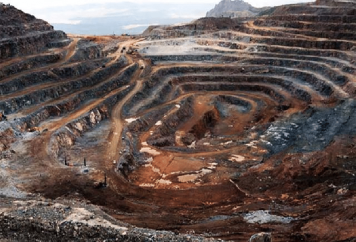Environmental Stewardship in Mining Protecting Ecosystems for Future Generations

Mining is a critical component of the global economy, providing essential raw materials for various industries. However, it is also one of the most environmentally challenging sectors, with significant impacts on ecosystems and communities. As the demand for minerals and metals continues to grow, the importance of environmental stewardship in mining has never been more crucial. This article explores how mining companies can protect ecosystems and ensure sustainable development for future generations.
Key Principles of Environmental Stewardshipa
Sustainable resource management is the cornerstone of environmental stewardship in mining. It involves the careful planning and utilization of mineral resources to prevent over-extraction and depletion. Companies are increasingly adopting technologies and practices that enhance resource efficiency, such as recycling and reprocessing of waste materials.
Innovative Practices in Environmental Stewardship
1. Sustainable Resource Management
2. Minimizing Environmental Impact
Reducing the environmental footprint of mining operations is a primary objective of environmental stewardship. This includes implementing measures to prevent soil erosion, water contamination, and air pollution. Advanced techniques like precision mining and the use of environmentally friendly explosives help minimize disturbances to surrounding ecosystems.
3. Biodiversity Conservation
Protecting biodiversity is essential for maintaining healthy ecosystems. Mining companies are now required to conduct comprehensive environmental impact assessments (EIAs) before commencing operations. These assessments identify critical habitats and species that need protection, enabling companies to develop strategies for conservation and rehabilitation.
4. Reclamation and Rehabilitation
Reclamation and rehabilitation are vital components of post-mining land use. Once mining operations cease, companies must restore the land to its natural state or repurpose it for other beneficial uses. This may involve soil remediation, reforestation, and the creation of artificial wetlands to support local wildlife.
5. Community Engagement and Collaboration
Engaging with local communities and stakeholders is crucial for successful environmental stewardship. Mining companies must work collaboratively with indigenous peoples, environmental organizations, and government agencies to ensure that their operations align with community values and environmental goals. Transparent communication and participatory decision-making processes foster trust and cooperation.
1. Eco-Friendly Mining Technologies
The adoption of eco-friendly technologies is transforming the mining industry. For instance, the use of electric and hydrogen-powered mining equipment significantly reduces greenhouse gas emissions. Additionally, advancements in remote sensing and data analytics enable real-time monitoring of environmental parameters, allowing for proactive management of potential issues.
2. Water Management Strategies
Water is a critical resource in mining, and its sustainable management is paramount. Innovative water recycling and treatment systems help reduce freshwater consumption and prevent contamination. Techniques such as dry stacking of tailings and the use of constructed wetlands for wastewater treatment are becoming standard practices in environmentally conscious mining operations.
3. Renewable Energy Integration
Integrating renewable energy sources into mining operations is a growing trend. Solar, wind, and hydroelectric power reduce reliance on fossil fuels and decrease the carbon footprint of mining activities. In remote areas, microgrids powered by renewable energy provide a reliable and sustainable energy supply.
4. Ecological Offsets
Ecological offsets are a mechanism to compensate for environmental impacts that cannot be fully mitigated. Mining companies invest in conservation projects, such as habitat restoration or the creation of protected areas, to offset their ecological footprint. These initiatives contribute to the overall health and resilience of ecosystems.

WE ARE KIMIA
Kimia Holding stands as a diversified conglomerate with a strong foothold in various sectors including mining and mineral resources, tourism services, livestock and poultry, agriculture, and foreign trade foreign trade in Iran and across the Middle East. However, it is within the realm of mining that Kimia Holding has truly distinguished itself, garnering recognition for its unwavering commitment to excellence and innovation.
CONTACT KIMIA
Our experts at Kimia Holding eagerly await your inquiries and are prepared to provide insightful answers or address any questions you may have. Should you require further details or wish to share your opinions, please don't hesitate to reach out. Your engagement is valuable to us.
As global awareness of environmental issues grows, the mining industry is under increasing pressure to adopt sustainable practices. Future advancements in technology, coupled with stringent regulatory frameworks, will drive further improvements in environmental stewardship. Collaboration between industry, governments, and civil society will be essential to ensure that mining contributes to sustainable development and the protection of ecosystems for future generations.
The Future of Environmental Stewardship in Mining
Conclusion
Environmental stewardship in mining is not just a regulatory requirement but a moral imperative. By adopting sustainable practices and innovative technologies, the mining industry can mitigate its environmental impact and contribute positively to the well-being of ecosystems and communities. Protecting the environment ensures that future generations can continue to benefit from the natural resources we rely on today. As stewards of the earth, it is our collective responsibility to safeguard its health and vitality for the future.
Resources

Case Studies in Environmental Stewardship
1. The Diavik Diamond Mine, Canada
The Diavik Diamond Mine in Canada's Northwest Territories is a leading example of environmental stewardship in mining. The mine operates under strict environmental regulations and has implemented comprehensive programs for water management, waste reduction, and biodiversity conservation. Notably, the mine uses wind turbines to generate a significant portion of its energy needs, reducing greenhouse gas emissions.
2. The QIT Madagascar Minerals (QMM) Project
The QMM Project in Madagascar is another exemplary case of environmental stewardship. This ilmenite mining project incorporates extensive environmental management plans to protect local biodiversity, including endangered species. The project also focuses on community development, providing education and healthcare facilities to local populations.

3. The Sarcheshmeh Copper Mine, Iran
The Sarcheshmeh Copper Mine in Iran is a notable example of environmental stewardship in a challenging environment. Located in the Kerman Province, this mine has implemented several initiatives to mitigate its environmental impact. The mine has invested in modern water management systems to reduce water consumption and prevent contamination of local water sources. Additionally, efforts have been made to rehabilitate mined areas through reforestation and soil remediation projects. The Sarcheshmeh Copper Mine also engages with local communities, ensuring that their needs and concerns are addressed through regular consultations and collaborative projects.

Written by Kimia Mines Company
A subsidiary of Kimia Holding, that began operations in 2018, focusing on mining exploration and exploitation within and outside Iran. The company specializes in producing iron concentrate, with a current capacity of 800,000 tons per year, supplying leading companies in the industry.
Kimia Mines Company aims to be a leading force in advancing the country's mining sector.





